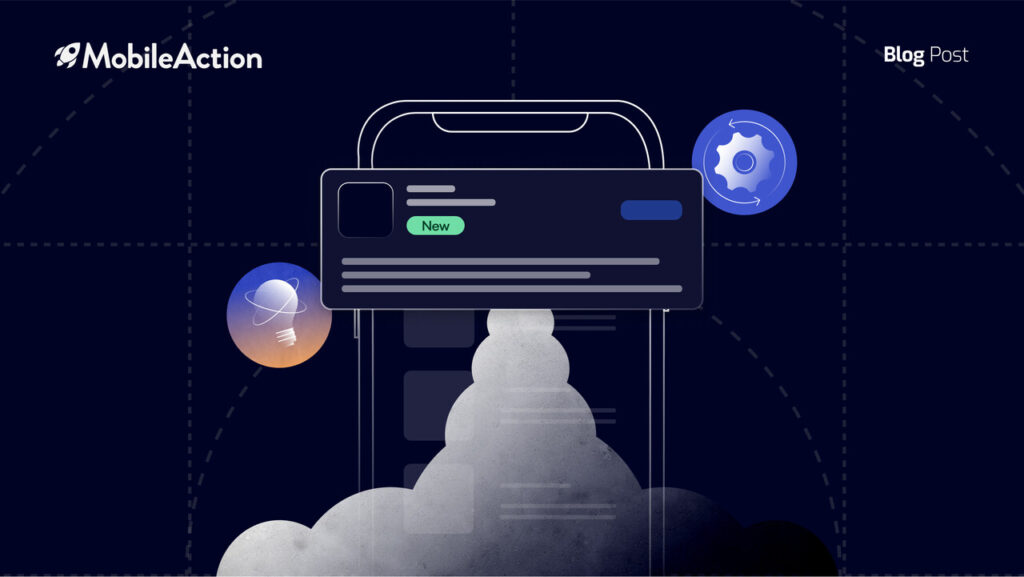Launching a mobile app in 2025 is both an exciting opportunity and a formidable challenge. The mobile app market is booming – consumers spent over $170 billion on mobile apps in 2024 with more than 218 billion downloads worldwide – yet it’s also intensely competitive.
In such a crowded arena, simply having a great app idea isn’t enough. A strategic mobile app launch strategy is critical to cut through the noise and get your app noticed.
Skipping the planning and marketing is like “throwing a stone into the ocean – you’ll make a tiny splash, then go unnoticed.”
This blog post will walk you through a step-by-step mobile app launch strategy – from validating your idea to building pre-launch buzz, optimizing your app store listing, and sustaining growth post-launch – to help ensure your app’s debut is a success.
Also, don’t forget to check out our article titled App Store Optimization made simple – The complete ASO checklist in 2025 [UPDATED] to make sure that you are ready for the launch!
Conduct thorough market and user research
Every successful mobile app launch strategy begins long before the app ever hits the store. Start by validating your app idea through rigorous market and user research.
Identify the problem your app solves and confirm that people actually face this problem and want a solution.
Competitive analysis is equally crucial. Study apps in your space – what are the top competitors doing well and where do they fall short? Look at their features, user reviews, pricing, and download stats.
This isn’t about copying ideas but about finding gaps or weaknesses you can capitalize on.
Many startups have failed simply by being outperformed by their competition, so doing competitive research helps you understand how to position your app effectively.
Identify what similar apps lack or what frustrations users express in reviews, and let that inform your product development.
User research can involve surveys, interviews, or beta groups to gather feedback on your concept.
The goal is to ensure your app concept meets a real demand in the market before you invest heavily in development or marketing.
Identify your target user persona
With your market research in hand, clearly define who your ideal users are. Pinpoint your target user persona – the archetype of the customer most likely to download and love your app.
Consider demographics (age, gender, location, income) as well as psychographics (interests, behaviors, pain points).
If you try to appeal to everyone, you’ll appeal to no one. As one guide put it, marketing without a clear audience is like “shooting arrows in the dark – you might hit something, but the chances are really small.”
Define your app’s unique value proposition
In a sea of millions of apps, you need to stand out with a unique value proposition (UVP). This is a concise statement of what makes your app different and why that difference matters to users.
Ask yourself: “What unique benefit does my app offer, and what problem does it solve better than anything else?”
The answer becomes your UVP. It might be an innovative feature, a better price, a specific niche focus, or a proprietary technology – whatever sets your solution apart.
Your app’s UVP is crucial for catching users’ attention and guiding their choice. It’s essentially the promise of value that you make to potential users.
Create a pre-launch landing page
Don’t wait until launch day to start marketing for your mobile app launch strategy. An engaging pre-launch landing page or website is a fantastic way to drum up interest and collect potential user emails ahead of time.
Even with minimal content (like your app name, a tagline, and a few screenshots or mock-ups), a landing page gives you an online “home” to direct people to.
Use this page to tease your app’s value proposition and capture leads: for instance, include an email signup form so visitors can “Get notified when we launch” or request access to a beta.
Offering a small incentive for signing up (such as early access, a special discount, or an entry into a giveaway) can boost signups.
The goal is to build a list of engaged prospects you can tap the moment your app goes live.
Build buzz on social media
Parallel to your landing page, start building buzz on social media well before launch. Claim your app’s handle on key platforms like Twitter, Instagram, Facebook, LinkedIn, or TikTok (wherever your target users spend time) and start posting engaging content.
The aim is to gather a following of interested people and create anticipation. You can share behind-the-scenes looks at your development journey, sneak peeks of app features, short demo clips, or countdown posts as the launch nears.
Teaser campaigns are great: for example, post a mysterious teaser image or a question related to the problem your app solves to pique curiosity.
Collaborate with influencers for wider reach
In 2025, influencer marketing remains a powerful way to broaden your mobile app launch strategy. Identify influencers or micro-influencers in your niche whose audience aligns with your target users.
For example, if you’re launching a fitness app, partner with popular fitness Instagrammers or YouTubers; for a productivity app, look at tech bloggers or LinkedIn thought leaders.
Reach out to them well ahead of launch to build a relationship. You might offer them exclusive early access to your app or other perks in exchange for an honest review or shout-out around launch time. Influencers lending their voice can lend credibility and expose your app to thousands of potential users you might not reach on your own.
Run a beta testing program and gather feedback
Before unleashing your app to the whole world, it’s wise to run a beta testing phase with a limited audience for your mobile app launch strategy.
This could be a closed beta (invite-only group of testers such as newsletter subscribers or users who signed up on your landing page) or an open beta/soft launch on one platform or in a specific region.
Beta testing serves multiple purposes: it helps you catch bugs or usability issues, gauge how real users interact with your app, and gather invaluable feedback on features and performance.
By the time you do a full launch, you’ll have ironed out many kinks, which leads to better reviews and retention.
Optimize your app store listing (ASO)
Your app’s App Store and Google Play listing is your storefront – it needs to attract and convince users to download. App Store Optimization (ASO) in 2025 is as vital as website SEO.
About 63% of iOS users (and 58% of Android users) discover new apps by searching the app store, so optimizing for app store search is crucial.
Before launch (or during soft launch), invest time in crafting a compelling, keyword-rich app store page.
Launch with paid promotions and PR blitz
When your app is finally ready for full launch, make sure you launch with a bang. Don’t quietly publish your app and hope people find it – orchestrate a promotion blitz to drive initial downloads and momentum.
One aspect is paid promotion or ads: allocate a budget for online ads to boost your app’s visibility in the crucial launch window.
You can use platforms like Facebook/Instagram Ads, Google Ads (including App Campaigns), Twitter Ads, or even Reddit and TikTok Ads, depending on where your audience hangs out.
Target your ads tightly to your user persona (by interests, demographics, keywords, etc.) to ensure you attract relevant users.
Emphasize your app’s unique benefits in the ad copy/creatives and consider offering an incentive for early adopters (such as a free trial or exclusive feature access).
Paid acquisition can jump-start your user base, which in turn can improve your app’s ranking in the store due to the influx of downloads.
Regularly update and improve your app
Mobile app launch strategy is not a one-and-done event – it’s the start of an ongoing improvement cycle.
Regularly update your app post-launch to keep users interested (and attract new ones). This means pushing out updates that fix bugs, improve performance, and add new features or content continually.
Apps that grow stagnant risk being uninstalled; users appreciate seeing that developers are active and responsive. Delivering updates that align with user needs is a key part of retention.
Track key metrics and monitor competitors
Once your app is live, data is your best friend. Establish a system to track key performance indicators (KPIs) and usage metrics from day one. These metrics will tell you how well your launch strategy is working and where to adjust course.
To learn more about the metrics to keep track, check out our article titled 6 Key ASO Metrics for Success in the App Stores
Final words
Launching a mobile app in 2025 is a multifaceted project that blends smart planning, marketing savvy, and continuous improvement.
Remember that a successful mobile app launch strategy is an ongoing journey: the weeks leading up to and following the launch are just as important as the launch day. Keep tracking your progress, listen to your users, and be ready to adapt.
The mobile landscape and user expectations always evolve, especially in 2025’s fast-paced environment. What doesn’t change is the value of being user-centric and strategic at every step.
With a friendly yet professional mobile app launch strategy approach – much like a nimble startup – you can navigate the launch process effectively: validate, differentiate, captivate, and then cultivate your user base.






